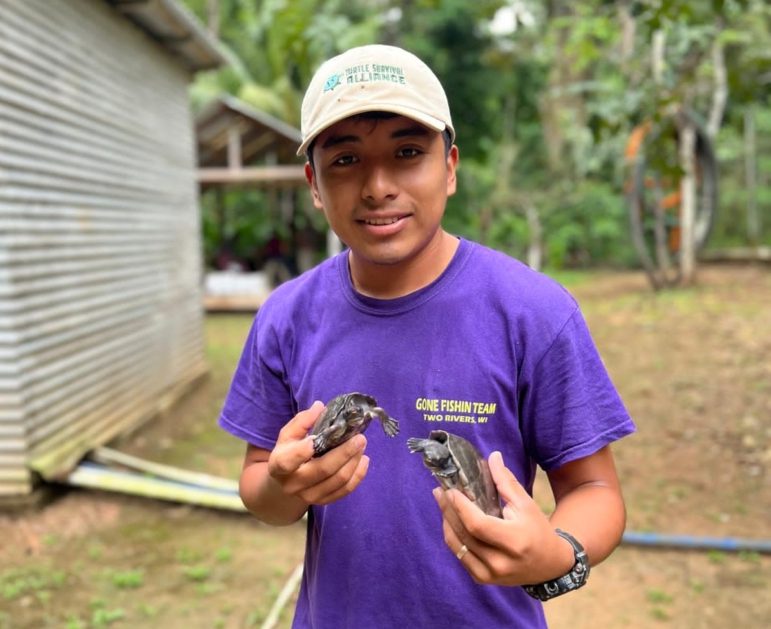Fellows
Andrew Choco Joins BFREE Full-time as Wildlife Fellow
Hey there! My name is Andrew Choco, and I am from Trio, a community adjacent to BFREE. I was raised in Bella Vista Village, where my connection with nature was somewhat limited. However, after watching documentaries on Animal Planet, my interest in the natural world was sparked. These programs ignited a deep passion for wildlife…
Read MoreThe Bladen Review 2024
The 9th edition of BFREE’s annual magazine is now available in an interactive format online at Issuu! Get the latest news from the field station and learn about exciting research, conservation and education projects taking place in and around the rainforests of Belize. Highlights of the 2024 magazine include: updates on the conservation and outreach programs associated with…
Read MoreMy Encounters with the Birds of BFREE!
The 1,153 acre BFREE Reserve where I work is a haven for diverse species of birds and my many encounters with them have always been memorable ones. Being in the heart of the jungle has provided me with many opportunities such as witnessing a spectacle display of birds in flight, birds feeding, bird dances, and…
Read MoreStudent Advocate Workshops for Earth Day
As part of Earth Day festivities, Heather Barrett, Deputy Director, and Jaren Serano, Dermatemys Program Coordinator with the support of Wildlife Education Fellow, Samih Young, delivered workshops at Sacred Heart Junior College and University of Belize. Over 60 students in Natural Resource Management and Biology as well as four educators participated in the workshops held…
Read MoreIntroducing Samih Young – BFREE Wildlife Education Fellow
By Samih Young and Heather Barrett This month, Samih Young joined the team and is taking on a brand new role within the BFREE Science and Education Fellowship Program. She joins as the Wildlife Education Fellow and will be collaborating on outreach programming and communications while also supporting work taking place at the Hicatee Conservation…
Read MoreRoses and Thorns: A Reflection on Life at BFREE by Cacao Fellow Graduate
There are experiences in life that can be considered life-changing, but nothing compares to spending about 70% of two years in the rainforest. I can confidently say that the two-year fellowship program at BFREE has been one of the most transformative experiences of my life. It all began when I came across a Facebook ad…
Read MoreJaren Serano returns to BFREE as Dermatemys Program Coordinator
By Jaren Serano During my first stint at BFREE, I had the privilege of witnessing the positive impact that organizations like this have on land conservation, wildlife protection, and the conservation efforts among the local communities in Belize. When I joined as BFREE’s first Science and Education Fellow in 2017, I was immediately drawn to…
Read MoreThe Fascinating Characteristics of Sundew
By Mark Canti The astonishing characteristics of sundews are unbelievable to me. During two research trips with Dr. Rob Naczi of NY Botanical Garden, I learned a lot about plants, especially sedges. I was introduced to carnivorous plants and found them fascinating. I was shocked to learn that while walking around, we have been stepping…
Read MoreCollaborative Cacao Research Project
By Roxanna Chen BFREE in collaboration with the University of Tennessee, Knoxville (UTK) facilitated a cacao research project at the BFREE’s Field Station in May 2023. The primary objective of the collaboration was to co-design and enhance post-harvest practices and methods for Criollo Cacao which is intercropped and shade-grown in several experimental plots within the…
Read MoreCacao Fellow Assists in Country-wide Sedge Survey
by Mark Canti Last month, I participated in a research expedition to understand biogeography and documentation of sedges in Belize and to fill in gaps that previous botanists have left unexplored and unidentified. My role throughout this research was to help navigate, locate, and identify existing, new, or unusual sedges, but most importantly to learn…
Read More

